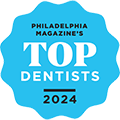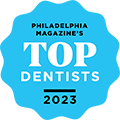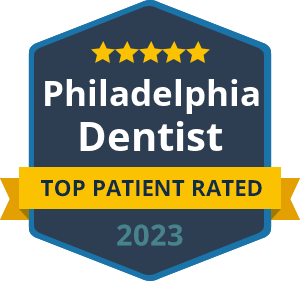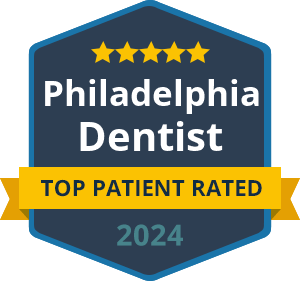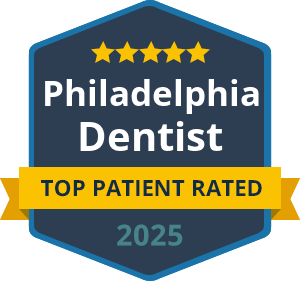
Is your child constantly tired despite getting what seems like enough sleep? Do they snore loudly, breathe through their mouth, or struggle with behavioral issues that remind you of ADHD? The answer to these concerns might be hiding in plain sight—right in your child’s mouth.
Sleep-disordered breathing in children has emerged as one of the most significant health issues of our time, affecting an estimated nine out of ten children to some degree. What makes this particularly concerning is that many parents and even healthcare providers don’t realize the profound connection between dental development and breathing problems.
As pediatric dentistry evolves in 2025, more dental professionals are recognizing their crucial role in identifying and addressing airway issues that can impact a child’s entire life trajectory. Understanding this connection could be the key to unlocking better sleep, improved behavior, and enhanced overall health for your child.
Understanding Sleep-Disordered Breathing in Children
Sleep-disordered breathing encompasses a range of conditions that disrupt normal breathing patterns during sleep. This spectrum includes everything from mild snoring to severe obstructive sleep apnea, where breathing actually stops temporarily throughout the night.
Unlike adults who primarily experience daytime sleepiness with sleep apnea, children often display different symptoms that can easily be misinterpreted. The developing brain responds differently to oxygen disruptions, leading to a complex array of issues that affect both nighttime rest and daytime functioning.
- The Critical Development Window: During childhood, 60% of facial development occurs by age 6, and 90% is complete by age 12. This makes early detection and intervention absolutely crucial for optimal outcomes.
Recognizing the Warning Signs Your Child’s Dentist Looks For
Modern pediatric dentists are trained to spot oral and facial characteristics that may indicate breathing problems. During routine dental visits, they evaluate several key factors that could signal airway concerns.
Dental Red Flags Include:
- Crowded or Crooked Baby Teeth: Healthy primary teeth should have spaces between them, indicating proper jaw development and tongue positioning
- High, Narrow Palate: A steep roof of the mouth can restrict nasal breathing passages
- Mouth Breathing Posture: Children who consistently breathe through their mouths show specific dental and facial development patterns
- Teeth Grinding: Frequent grinding can indicate the body’s attempt to open the airway during sleep
Facial Development Indicators:
- Long Face Syndrome: Extended facial height often correlates with narrow airways
- Receding Chin or Jaw: When the lower jaw doesn’t develop forward properly, it can push the tongue back and restrict breathing
- Dark Circles Under Eyes: Often called “allergic shiners,” these can indicate chronic nasal congestion and poor sleep quality
The Behavioral Connection That Surprises Parents
Perhaps the most surprising aspect of sleep-disordered breathing is its impact on behavior and cognitive function. Children who don’t get quality sleep due to breathing interruptions often exhibit symptoms that mirror other conditions.
Common Behavioral Manifestations:
- ADHD-like Symptoms: Difficulty concentrating, hyperactivity, and impulsiveness can all stem from poor sleep quality
- Aggressive Behavior: Sleep deprivation affects emotional regulation, leading to increased irritability and aggression
- Academic Struggles: Poor sleep directly impacts memory consolidation and learning capacity
- Social Challenges: Tired children often have difficulty managing social interactions and reading social cues
Physical Symptoms to Watch For:
- Bedwetting: Sleep disruptions can affect the hormones that control nighttime urine production
- Frequent Illness: Poor sleep compromises immune function, leading to recurring ear infections, sore throats, and respiratory issues
- Growth Concerns: Growth hormone is primarily released during deep sleep stages that are disrupted by breathing problems
How Modern Dental Intervention Can Transform Sleep
The exciting development in pediatric dentistry is the shift from simply observing these problems to actively treating their root causes. Today’s pediatric dentists have access to innovative treatments that can guide proper facial development and improve airway function.
Early Intervention Approaches:
- Orthodontic Guidance: Specialized appliances can help expand narrow palates and guide jaw development in the optimal direction
- Myofunctional Therapy: Teaching proper tongue posture and breathing techniques helps establish healthy patterns
- Habit Correction: Addressing thumb sucking, tongue thrusting, and other habits that contribute to airway restriction
- The Preventive Advantage: When airway issues are addressed early, children often experience dramatic improvements in sleep quality, behavior, and overall health. This proactive approach can prevent the need for more intensive treatments later in life.
The Collaborative Care Approach
Modern pediatric airway management involves a team approach that brings together dental professionals, medical specialists, and other healthcare providers. Your child’s dentist may work closely with pediatricians, ENT specialists, sleep medicine physicians, and even speech therapists to address all aspects of sleep-disordered breathing.
What This Means for Families:
- Comprehensive Screening: Regular dental visits now include airway assessment as a standard part of care
- Early Detection: Problems can be identified and addressed before they become severe
- Coordinated Treatment: All healthcare providers work together to ensure the best outcomes for your child
The Sleep-Breathing-Development Cycle
Understanding the connection between breathing, sleep, and development helps explain why addressing these issues early is so crucial. When children breathe properly through their noses, their tongues naturally rest against the roof of their mouths, acting like a natural expander that guides proper jaw and facial development.
- The Positive Cycle: Proper nasal breathing leads to correct tongue posture, which promotes optimal jaw development, creating adequate space for teeth and maintaining open airways. This results in quality sleep, which supports healthy growth, cognitive development, and emotional regulation.
- The Problematic Cycle: Mouth breathing leads to poor tongue posture, which restricts jaw development, creating narrow airways and crowded teeth. This causes disrupted sleep, which impacts growth, learning, and behavior.
Questions Every Parent Should Ask
During your child’s next dental visit, consider asking these important questions to ensure comprehensive airway assessment:
- Does my child show any signs of airway restriction or sleep-disordered breathing?
- How is my child’s facial development progressing, and are there any concerns about jaw growth?
- Are there any habits or patterns we should address at home to support healthy breathing?
- Should we consider any preventive treatments to optimize my child’s airway development?
The Future of Pediatric Airway Health
As awareness of sleep-disordered breathing in children continues to grow, pediatric dentistry is positioned to play an increasingly important role in early identification and prevention. The integration of airway assessment into routine dental care represents a significant advancement in comprehensive child health.
Research continues to reveal the far-reaching impacts of sleep quality on everything from immune function to academic performance, making airway health a critical component of overall childhood wellness.
Taking Action for Your Child’s Health
If you recognize any of the signs discussed in this article, don’t wait to seek professional guidance. Early intervention can make a profound difference in your child’s quality of life, both now and in the future.
Remember that many children with sleep-disordered breathing appear to function normally during the day, but they’re not reaching their full potential. Quality sleep is fundamental to healthy growth, development, and happiness.
Your Trusted Partner in Pediatric Dentistry
At The Pediatric Dental Team in Philadelphia, we understand the critical connection between oral health and overall wellness. Our comprehensive approach includes airway assessment as part of every examination, ensuring that we identify and address potential breathing issues early.
We’re committed to helping families in the area achieve optimal health outcomes through preventive care and early intervention. If you have concerns about your child’s sleep, breathing patterns, or development, we encourage you to schedule a consultation to discuss how we can support your child’s health and well-being.
Contact The Pediatric Dental Team today to learn more about how we can help your child breathe better, sleep better, and thrive in every aspect of their development.
Posted on behalf of
2010 South Juniper Street
Philadelphia, PA 19148
Phone: 215-334-3490
Mon: 8:00AM – 4:30PM
Tues: 8:00AM – 4:30PM
Wed: 8:00AM – 4:30PM
Thu: 8:00AM – 4:30PM
Fri: 8:00AM – 1:00PM


